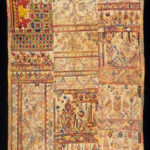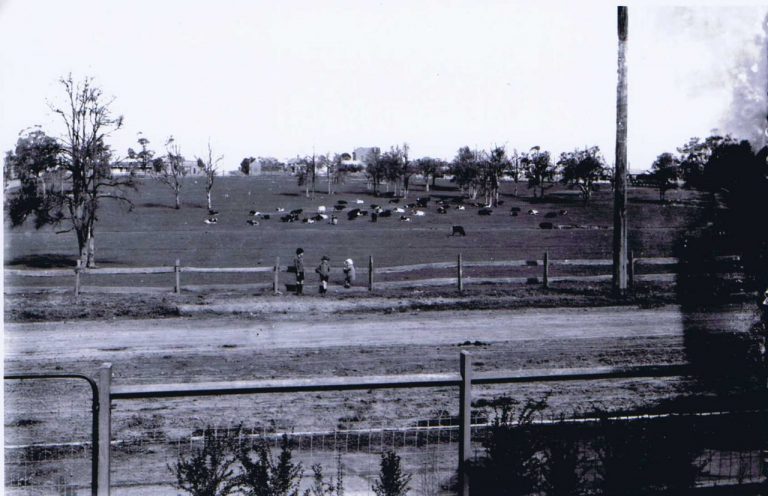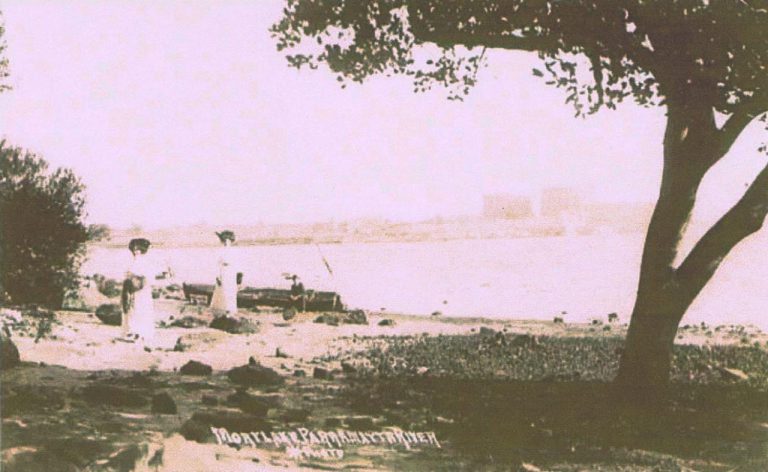This sampler is one of the oldest pieces in our collection. It was worked by Maria Darling in 1834. Unfortunately, we don’t know who the young lady was or how it came into our possession. As well as the lettering, decorations and border there is a short verse: What is the world, all things here. Tis but a bitter sweet. When I attempt a rose to pluck, a prickling thorn I meet.
A needlework sampler is a piece of embroidery or cross-stitching produced as a ‘specimen of achievement’, demonstration or a test of skill in needlework. It often includes the alphabet, figures, motifs, decorative borders and sometimes the name of the person who embroidered it and the date. The word sampler is derived from the Latin exemplum, which means ‘example’.
The oldest surviving European samplers were made in the 16th and 17th centuries. As there were few pre-printed patterns available for needleworkers, a stitched model was needed. Whenever a needleworker saw a new and interesting example of a stitching pattern, they would quickly sew a small sample of it onto a piece of cloth – their ‘sampler’. The patterns were sewn randomly onto the fabric as a reference for future use, and the needleworker would collect extra stitches and patterns throughout their lifetime.
The first printed pattern book was published in 1523, but it was not easily obtainable and a sampler was the most common form of reference available to many women.
The earliest English dated surviving sampler, housed in the Victoria and Albert Museum in London, was made by Jane Bostocke who included her name and the date 1598 in the inscription. Stitched with silk and metal thread on linen, it has pictorial figures above with border and all-over patterns below.
By the middle of the 17th century English, Dutch, and German samplers were being stitched on a narrow band of fabric 6–9 in (150–230 mm) wide. As fabric was very expensive, these samplers were totally covered with neat rows of stitches. They were known as band samplers and valued highly, often being mentioned in wills and passed down through the generations.
Band samplers were more decorative than the utilitarian random motif spot samplers, and stitchers finished them by adding their names, dates of completion, and sometimes teacher or school names.
As the work of sampler making moved into schools in the late 17th and early 18th centuries design styles changed. Alphabets and verses were added along with pictorial elements such as architectural motifs, landscapes, and large potted plants. Educational themes included maps, multiplication tables, perpetual calendars, and acrostic puzzles.
Samplers were mainly school exercises during the 18th and 19th centuries, and were almost entirely worked in cross stitch.







